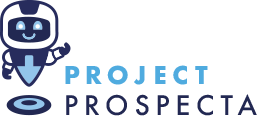At Project Prospecta we sent 87 emails on behalf of one of our clients. We had 20 opens and 16 click-throughs. That’s an 18.3% click-through rate. The construction industry average is 2%, according to Mailchimp, so 18.3% is over 9x better. That means 9x more architects are on our client’s website reading about their product and making inquiries.
We achieve that mostly through these email writing tips. So here are three tips that’ll help you be more effective in your email writing.
Tip #1 – Keep it short
Mark Twain once said, “sorry for the long letter, I didn’t have time to write you a short one.” Nowadays we’re all writing emails, but the principle remains. It’s harder to write a short concise email than it is to write a long one, getting straight to the point is difficult but it’s worth it. People have short attention spans and don’t want to be bored with a long pitch.
We once wrote an email for a customer, it was concise and to the point. Later the client wanted to add more facts and features about the product. We explained the premise behind our short email. But they continued to want to include more details. We said okay and tried it their way.
But that email ended up getting 17 times fewer clicks than our average and here’s what went wrong.
They tried to include everything about the product in one email. You just can’t do that in a prospecting email because if you do then architects just won’t read it and they won’t click the call to action (CTA).
It’s better to have people read a shorter email that lacks some of the detail but to click through and to continue to learn more about your product on your website than it is for a person to get a long email and just bin it immediately.
Next time you’re composing an email, stop and think about what can this email feasibly achieve and stick to that.
Tip #2 – Start with the benefit to the customer
The first thing clients say to us when we ask them, “what do you do for your customers?”, Is something generic like, “we’re faster”, “we’re cheaper” or “we can help you from start to finish”. Anybody in the construction industry could say that, and everybody does say that. In a busy marketplace, it is key to stand out from your competition. So be more specific and focus on the customer, not your own business.
What does it mean to architects that you’re fast? Well here’s an example from one of our clients. They calculated how much time their product could save their clients on-site, compared to a similar product. If their customers are on site for less time, then they can keep the site open for less time, which means there are fewer costs incurred. They estimated the average cost per day of keeping the site open and then calculated how much savings they could make for a customer.
Based on that example, here’s how their email could open:
Hi Name,
I wanted to let you know about a fast scaffolding alternative.
It can be set up in a third of the time it takes for traditional scaffolding to be erected.
This can save you a whole week on site. Saving you about £75,000 on average.
Let me know if you’d like to speak.
Kind Regards,
The strength of this email is that they’ve calculated the benefit in a statistic, in this case, the actual amount of money that it would save their customers. It makes it more credible than saying “we can do it quickly” or even dressing it up as an ‘efficient solution’.
Tip #3 – Speak like a person
There’s a myth in business-to-business that we have to speak to a vague corporate entity, dress up our language and fluff it out. Whilst we do have to consider tone, keep in mind that you’re speaking to a person, not a company. Picture an architect in front of you and think about their hopes and their fears, their desires and their goals and their ambitions and frustrations.
Hopefully, you have all this information for your buyer segment, through customer research and an architect’s buyer persona that you’ve built off the back of that. But short of that just think about your experience with your market and create an in-depth picture of a typical person in that market.
Speak to them the way you would to any person. Avoid unnecessary jargon, stuffy or flowery language. Even avoid including certifications, which isn’t going to have a persuasive effect on them. It’s tempting to include them, to make it seem more official or credible, but in reality, everybody’s certified. So you don’t need to include that and it’s only included because you don’t have something else to say.
If you are struggling with what to say then go back to tip two and find out what the benefit of your product is offering to your prospects. If you take out all the fluff, all the jargon, all the certifications, then you’re leaving yourself with the most essential pieces of information and making it more readable and personal. And the more personal something is, the more likely architects are to engage with it.
Conclusion
These are three tips from our experience writing emails to architects. Project Prospecta has consistently had an above-average click-through rate and it’s mostly through practising these three tips. It’s something that’s not too difficult and that everybody can do, and should do. Because at the end of the day it gets results.
Receiving emails that are personal, readable, and straight to the point, are the type of emails I think that all of us would appreciate.
If you want any more tips, email writing help or to chat anything marketing or sales in the construction industry. Then feel free to get in touch.



